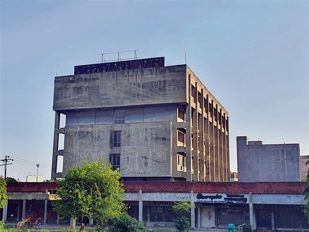
Photo for representation only.
MELBOURNE
Scientists have developed an efficient, low-cost method that can convert waste denim into reusable cotton fibres, an advance that may help prevent mountains of fabrics from ending up in the world's landfills each year.
Cotton-based clothing, such as denim, makes up a large proportion of textile waste. Meanwhile, farming cotton consumes land and resources.
Although processes for textile recycling exist, they tend to be inefficient and expensive. Efficiently converting waste denim into reusable cotton fibres could help address both of these problems.
Researchers from Deakin University in Australia created viscose-type fibres from waste denim that are either white or the original colour of the garment.
Previously, researchers have used ionic liquids—salts that are liquid, not solid—to dissolve cotton textiles into their cellulose building blocks.
The cellulose was then spun into new viscose-type fibres that could be woven into textiles. However, ionic liquids are expensive and difficult to work with because of their high viscosity.
Researchers wanted to find a way to reduce the amount of ionic liquid solvent required to recycle denim into regenerated cellulose fibres.
The researchers ground three textile samples—blue denim fabric, red denim pants and a mixed-colour T-shirt—into powders.
Then, they dissolved the powders in a 1:4 mixture of the ionic liquid 1-butyl-3-methylimidazolium acetate and dimethyl sulfoxide (DMSO).
Using a high concentration of DMSO as a co-solvent allowed the researchers to use much less ionic liquid than other methods.
In addition, DMSO reduced the viscosity of the ionic liquid solution, making it easier to spin the cellulose into new fibres.
Since DMSO is much cheaper than the ionic liquid, the new process reduced the cost of solvent by 77 per cent.
When they pre-treated the textile powders with a sodium hydroxide solution, the researchers could produce white viscose-like fibres.
Without this step, the fibres retained the colour of the original item, which conserves water and energy that would otherwise be required for textile dyeing. — PTI


























